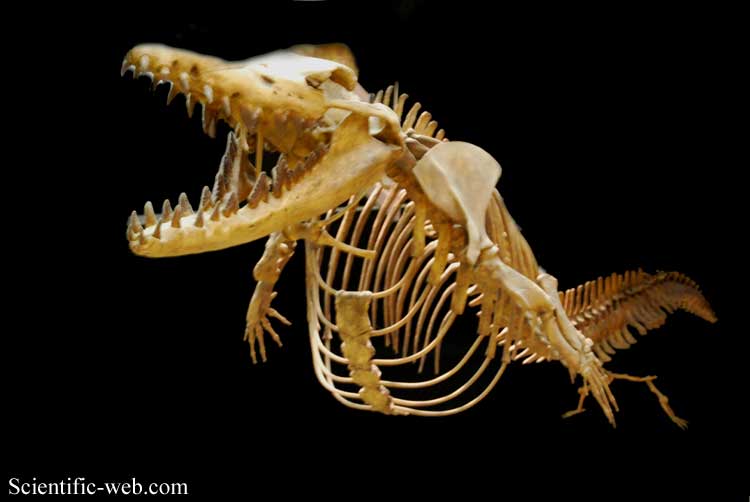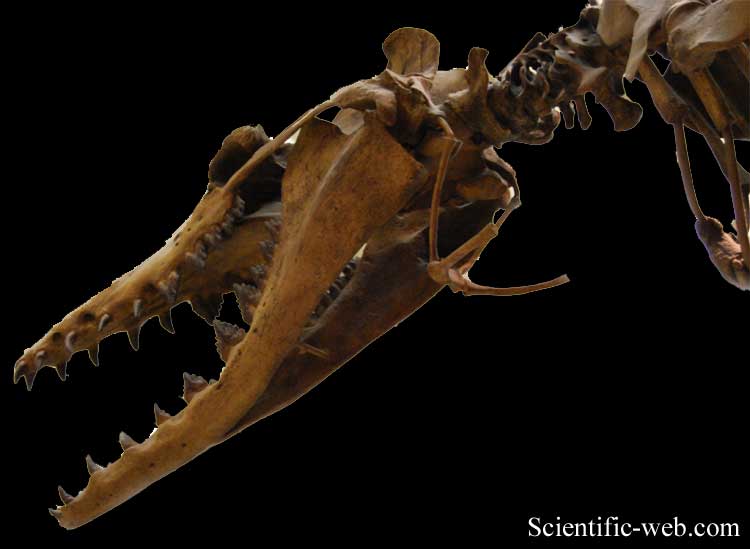Dorudon atrox, Photo: Michael Lahanas Cladus: Eukaryota
Dorudon atrox, Photo: Michael Lahanas ---- Dorudon("Spear-Tooth") was a genus of ancient cetacean that lived alongside Basilosaurus 41 to 33 million years ago, in the Eocene. They were about five meters (16 ft) long and were most likely carnivorous, feeding on small fish and mollusks. Dorudontines lived in warm seas around the world. Fossils have been found in North America, Egypt as well as Pakistan the eastern part of which bordered the ancient Tethys Sea. Dorudontines were originally believed to be juvenile Basilosaurus as their fossils are similar but smaller. They have since been shown to be a different species with the discovery of Dorudon juveniles. Although they look very much like modern whales, basilosaurines and dorudontines lacked the 'melon organ' that allows their descendants to use ultrasound as effectively as modern whales. Like other basilosaurids, their nostrils were midway from the snout to the top of the head. The Dorudon calves may have fallen prey to hungry Basilosaurus, as shown by unhealed bite marks on the skulls of some juvenile Dorudon. In Popular Culture Dorudon was featured in the episode Whale Killer in the BBC's documentary Walking with Beasts, as well as in the fourth part of its follow-up, Sea Monsters. They are depicted as living in groups, with their calves being the primary prey of their relative, Basilosaurus. * Haines, Tim & Chambers, Paul. (2006) The Complete Guide to Prehistoric Life. Canada: Firefly Books Ltd. Source: Wikispecies, Wikipedia: All text is available under the terms of the GNU Free Documentation License |
|



